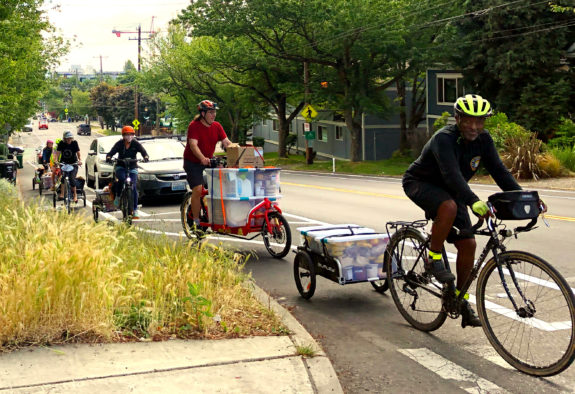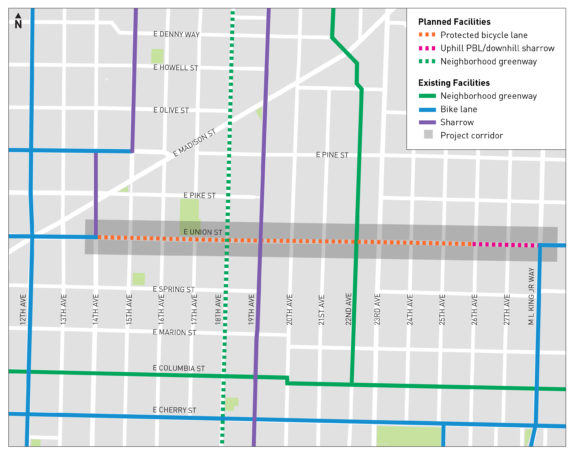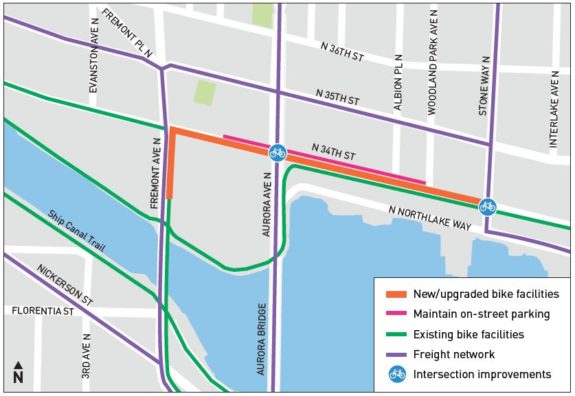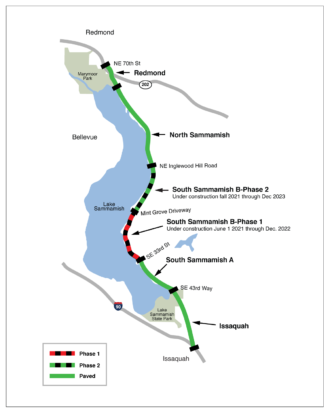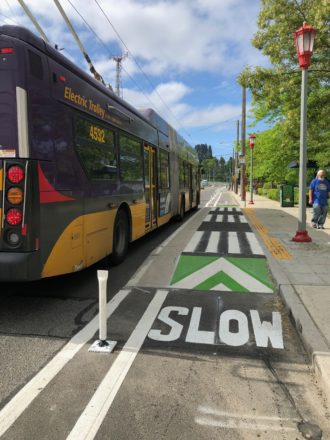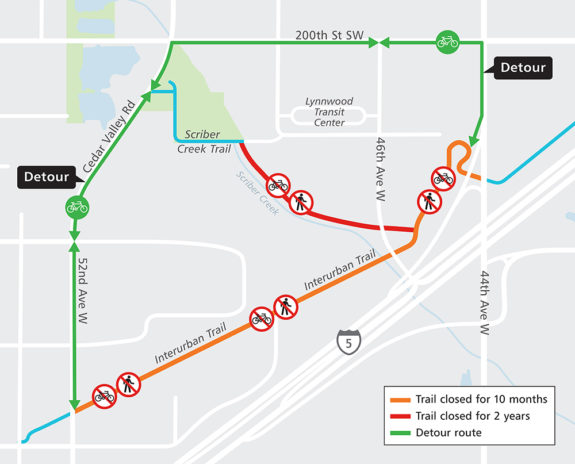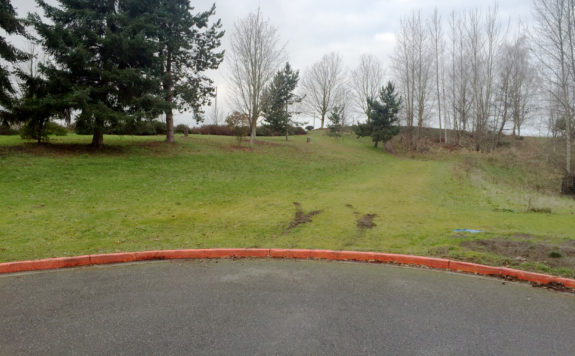
For years, WSDOT has resisted working with Seattle to connect the Rainier Valley Neighborhood Greenway to the Mountains to Sound Trail (AKA the I-90 Trail), according to reporting by Ryan Packer for the Urbanist. Packer requested emails between the two public agencies to uncover why this final connection remains incomplete years after the rest of the route opened, and his findings are extremely frustrating.
The needed connection is very short, spanning a half a block at most from where 28th Ave S abruptly ends and the regional trail just a couple hundred feet beyond. The land the path needs to travel through is already flattened down by people walking and biking across the grass, a clear sign that a pathway is needed here. Also known as “cow paths,” informal walking paths like these show transportation agencies where unmet facilities exist in the communities they serve.
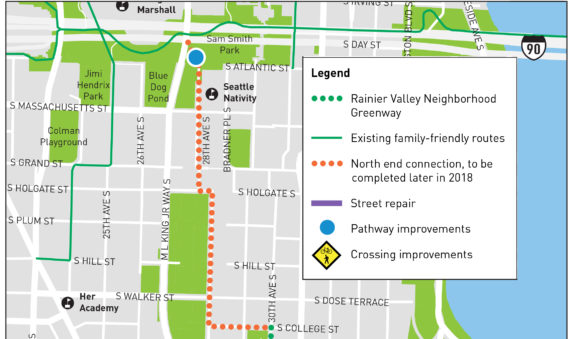
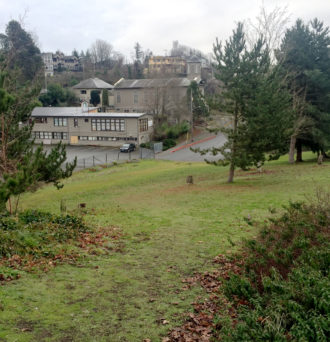
This grass is part of WSDOT’s lid over I-90, which created Sam Smith Park and is home to the I-90 Trail. The I-90 Trail is a major transportation facility of regional importance that includes investments from many agencies along its route including WSDOT. The trail connects some of the state’s largest employment and residential areas. Yet Packer’s reporting shows that WSDOT has put up major road blocks for at lease half a decade to prevent SDOT from building a short trail connecting the local biking and walking network in southeast Seattle to this regional backbone.
“A set of emails obtained by The Urbanist reveal the long battle between SDOT and WSDOT to come to an agreement around use of the property,” Packer reports. “That battle has continued into 2021, when a lease agreement was on the verge of being signed between the state and the city early this year, but city staff were surprised to find that the proposed agreement would have committed SDOT to paying nearly $24,000 per year to WSDOT in perpetuity (tied to inflation) after paying to design construct the trail connection itself.” (more…)

